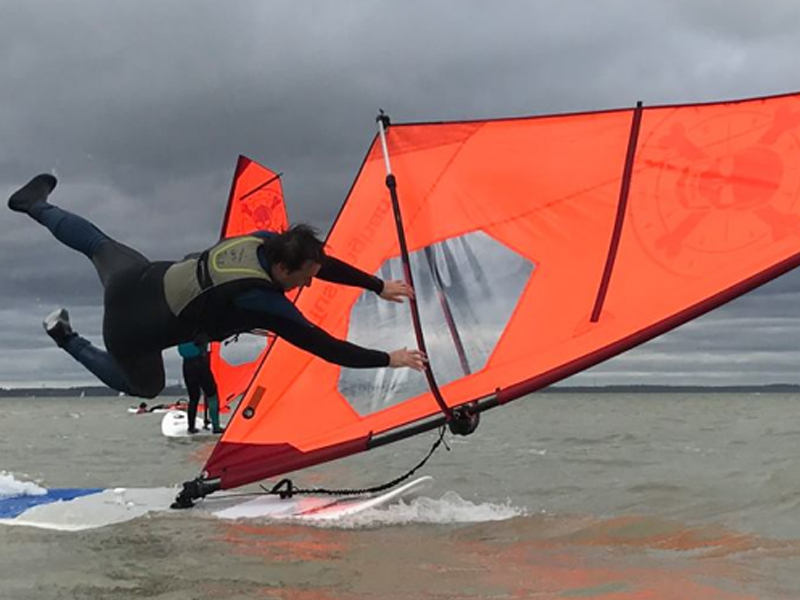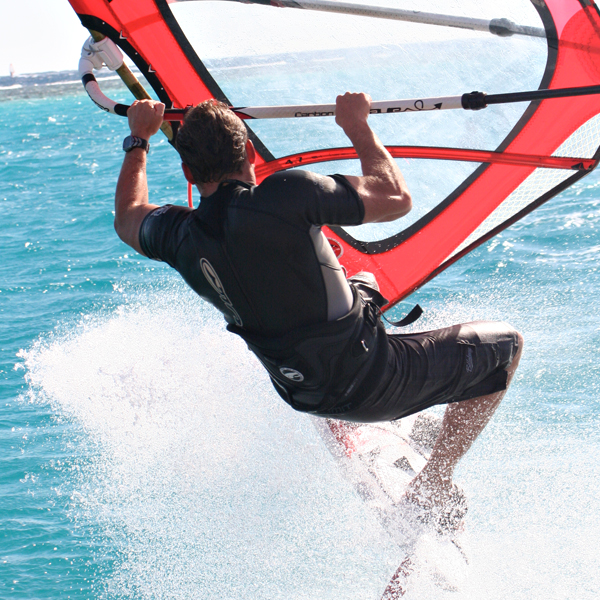Wetsuit Guide for Beginners

Watersports fun at UKSA
Are you eager to dive into the world of water sports but a little intimidated by the thought of putting on a wetsuit for the first time? Do not be afraid; this thorough manual was created with beginners like you in mind. We’ll advise you on the various varieties of wetsuits available, solve the wetsuit’s riddles, and show you how to put one on. You’ll be ready to suit up and confidently ride the waves by the time you’ve read this article!
What is a Wetsuit?
What does a wetsuit actually do? A wetsuit is fundamentally a form-fitting, insulating clothing used to keep you warm while participating in water-based sports like surfing, dinghy sailing, scuba diving, or snorkelling. Special materials used to make these suits trap a tiny film of water on your skin. Your body is then protected from the cooler water outside by the warm trapped water, keeping you comfortable even in icy conditions.
Different Types of Wetsuits
Wetsuits exist in a variety of designs, each one made for a particular watersport and weather. Here is a list of the most typical types:
Fullsuit Wetsuit
For many watersport enthusiasts, especially those who participate in activities like surfing, the fullsuit wetsuit is the go-to option. Your entire body, including your arms and legs, are covered, giving you the greatest protection possible from the cold water. Neoprene, a stretchy and insulating material that offers buoyancy and aids in maintaining body temperature, is generally used to make fullsuits.
Springsuit Wetsuit
The springsuit is a more condensed variant of the fullsuit, commonly referred to as a shorty wetsuit. Your body and upper thighs are normally covered, leaving your arms and lower legs unprotected. When you require more freedom of movement, such as when paddleboarding or snorkelling, or in warmer waters, this design is appropriate.
Long John Wetsuit
The sleeveless and legless long john wetsuit provides core warmth without limiting your arms and legs. For activities like kiteboarding or windsurfing, where you must maintain mobility while keeping your core warm, this design is ideal.
Short John Wetsuit
The short john wetsuit, also called a shorty john, combines the long john’s sleeveless style with a springsuit’s shorter legs. It’s a flexible choice that works for a variety of water sports and is preferred by people who like less coverage.
Drysuit
Drysuits are important to mention even if they aren’t exactly wetsuits. These specialised clothing items completely isolate you from the surrounding water, offering complete waterproofing. Drysuits are used by divers to stay warm and dry in chilly underwater settings.
How Does a Wetsuit Work?
Let’s explore how wetsuits function to keep you comfortable in the water now that you are aware of the various sorts that are on the market.
Do Wetsuits Keep You Dry?
Despite their name, wetsuits do not entirely dry you out. They instead produce a thin water barrier between the suit and your skin. After reaching body temperature, this layer becomes an insulating barrier. Wetsuits maintain this layer of warmth to keep you warm even when you’re submerged in chilly water.
Do Wetsuits Keep You Warm?
Yes, the main purpose of wetsuits is to keep you warm in frigid water. Wetsuits are frequently made of neoprene, which is a great insulator. Your body heat heats the contained water as you move and water seeps into the suit, keeping you from getting too cold.
The degree of warmth provided by a wetsuit is significantly influenced by the neoprene’s thickness. Wetsuits come in a range of thicknesses, usually from 1mm to 7mm. Although a thicker wetsuit insulates better, it may restrict your movement. A 3/2mm wetsuit is a popular choice for beginners because it strikes a mix between warmth and flexibility.
What to Wear Under a Wetsuit?
Under your wetsuit, the proper clothing is crucial for both comfort and cleanliness. The majority of wetsuits are made to be worn directly against the skin, with no additional clothing required. A quick fashion guide is provided below:
- Swimsuit: Wear a swimsuit and/or rash guard underneath your wetsuit for best comfort. This offers an additional layer of safety and prevents chafing.
- No sunblock: Avoid putting sunscreen on your body right before donning a wetsuit since it will eventually harm the neoprene material. Apply sunscreen far in advance if you need to protect yourself from the sun so it has time to seep into your skin.
- No Oils or Lotions: Similarly, avoid using oils or lotions on your skin before wearing a wetsuit, as they can degrade the neoprene and affect its performance.

How to Put on a Wetsuit
It might be challenging to put on a wetsuit, especially for novices. You will, however, master it with some practise. Here’s a how-to for comfortably donning your wetsuit, step by step:
Step 1: Choose the Right Size
Make sure your wetsuit is the right size. It should be snug but not excessively so. A comfortably fitted wetsuit maximises its insulating capabilities.
Step 2: Prepare Your Body
Before attempting to put on the wetsuit, make sure your body is clean and dry. The neoprene won’t need to endure excessive wear and strain if any sand or dirt are removed.
Step 3: Open the Zippers
Zippers on your wetsuit should be fully opened. This will make donning the suit simpler.
Step 4: Put Your Legs In
Insert your legs next, insert each leg of your wetsuit one at a time. To ensure that the neoprene is distributed properly, use your hands to guide it up your legs.
Step 5: Pull Up the Torso
Pull the wetsuit slowly up your torso once your legs are in. As you go, reach inside and pull it over your shoulders. Make sure the suit is tight but not confining.
Step 6: Secure the Zippers
Ask a friend to assist you in opening the back zipper on your wetsuit if it has one, or use a zipper puller tool. Make sure the zip is shut all the way and is stable.
Step 7: Adjust and Seal
Make any alterations required to guarantee a snug fit. Make sure your wrist and ankle cuffs are snug but not so tight that they impede blood flow.
Step 8: Check Mobility
Move about and stretch a little before entering the water to assess your range of motion. You ought to feel free to go around without being constrained.
Step 9: Final Check
Make one last check to make sure everything is in place and that the neoprene does not have any folds or wrinkles that could cause irritation or chafing.
Congratulations! With your wetsuit on, you are now prepared to enter the water. Keep in mind that, particularly if this is your first time wearing a wetsuit, it may take some time to get acclimated to the sensation.
Latest posts







